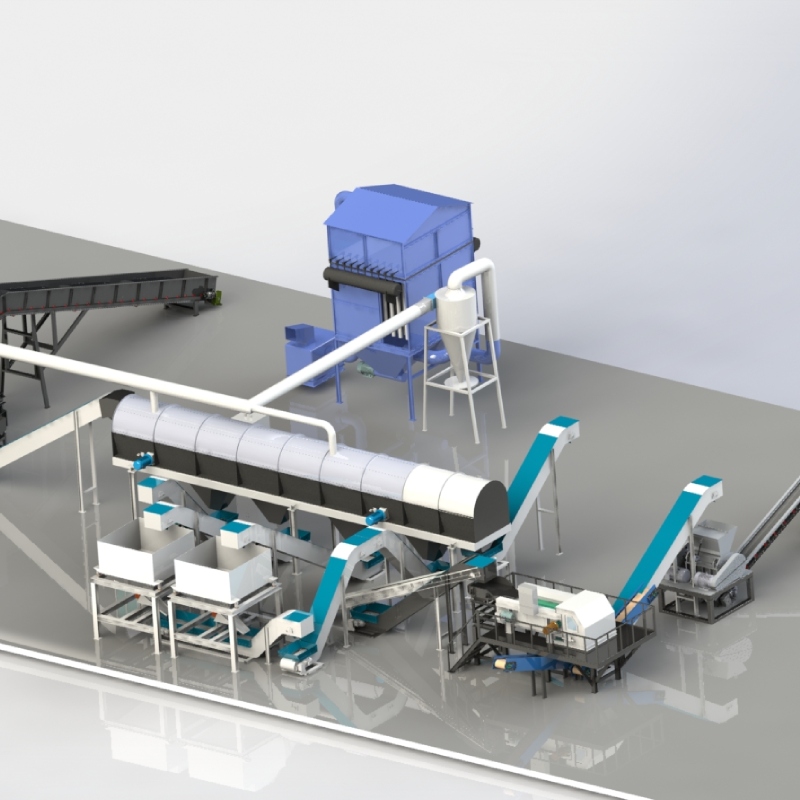

Kas . 21, 2024 11:20 Back to list
The Importance of Scrap Metal Recycling Plants
In today’s rapidly evolving industrial landscape, the significance of recycling has gained unprecedented attention. Among various recycling sectors, scrap metal recycling plays a crucial role in promoting sustainability, reducing waste, and conserving natural resources. Scrap metal recycling plants are pivotal in this process, responsible for the collection, processing, and redistribution of scrap metals. This article delves into the operations, benefits, and future of scrap metal recycling plants.
Understanding Scrap Metal Recycling
Scrap metal refers to any metal that is discarded or no longer in use but has the potential for being reused. This includes materials from old vehicles, construction remnants, electronic waste, and manufacturing by-products. Scrap metal recycling involves the collection of these materials, which are then sorted, cleaned, melted, and reformed into new products.
Scrap metal can be broadly categorized into two types ferrous and non-ferrous metals. Ferrous metals contain iron and are magnetic, such as steel and cast iron, while non-ferrous metals include copper, aluminum, and brass, which are non-magnetic. Recycling both types of metals not only helps to reduce landfill waste but also reduces the demand for virgin metal extraction, which is an energy-intensive process.
The Operations of Scrap Metal Recycling Plants
Scrap metal recycling plants operate through a systematic process that ensures maximum recovery of valuable materials. Initially, scrap metals are collected from various sources. These can include industrial facilities, manufacturers, and even individual consumers. Once collected, the materials are transported to the recycling plant.
Upon arrival, the scrap metal is sorted and categorized based on type and quality. This sorting process can involve manual labor as well as advanced technologies, such as electromagnets, conveyor belts, and sensors. Once sorted, the metals undergo cleaning, which removes contaminants like rust, paint, and oil.
The next step involves shredding the metals into smaller pieces. This is crucial as it makes the melting process more efficient. The shredded metals are then melted in large furnaces, reaching high temperatures that allow them to become molten. After melting, the liquid metal is poured into molds to create ingots or other shapes, ready for resale or reuse in manufacturing.
Benefits of Scrap Metal Recycling Plants

The benefits of scrap metal recycling plants extend far beyond environmental advantages. Here are a few significant gains
1. Conservation of Resources Recycling scrap metals conserves natural resources by reducing the need for extracting new metals from the earth. For instance, recycling aluminum uses about 95% less energy compared to producing aluminum from bauxite ore.
2. Environmental Protection This process significantly diminishes the amount of waste sent to landfills. According to estimates, recycling one ton of steel can save approximately 1.6 tons of iron ore, along with large amounts of water and energy.
3. Economic Growth Scrap metal recycling contributes to the economy by creating jobs and supporting local businesses. Recycling plants employ a significant number of workers in various roles, from sorting and processing to marketing and administration.
4. Reduction of Pollution By recycling metals, the emission of greenhouse gases and other pollutants is reduced. Fewer plants are required for extracting and processing raw materials, which can often result in significant environmental degradation.
Future of Scrap Metal Recycling
The future of scrap metal recycling plants is poised for growth as awareness regarding environmental issues intensifies. Advances in technology, such as automation and artificial intelligence, are expected to streamline operations and improve efficiency. Additionally, the continuous development of new recycling methods could enhance the recovery of valuable materials, making the process more economically viable.
Moreover, as industries move toward sustainability, there will likely be an increasing demand for recycled materials. Government regulations and policies aimed at promoting recycling and reducing waste are also expected to bolster the growth of scrap metal recycling plants.
Conclusion
In conclusion, scrap metal recycling plants are integral to fostering a sustainable and economically beneficial future. Beyond their environmental impact, they create jobs and support local economies while conserving precious resources. As society continues to navigate the challenges of waste management and environmental sustainability, the role of scrap metal recycling plants will undoubtedly become more pronounced, driving us toward a greener future.
Latest news
Troubleshooting Common Eddy Separator Problems
NewsJul.04,2025
The Role of Metal Recycling Plants in Circular Economy
NewsJul.04,2025
The Impact of Recycling Line Pickers on Waste Management Costs
NewsJul.04,2025
Safety Features Every Metal Shredder Should Have
NewsJul.04,2025
How Industrial Shredders Improve Waste Management Systems
NewsJul.04,2025
How Cable Granulators Contribute to Sustainable Recycling
NewsJul.04,2025